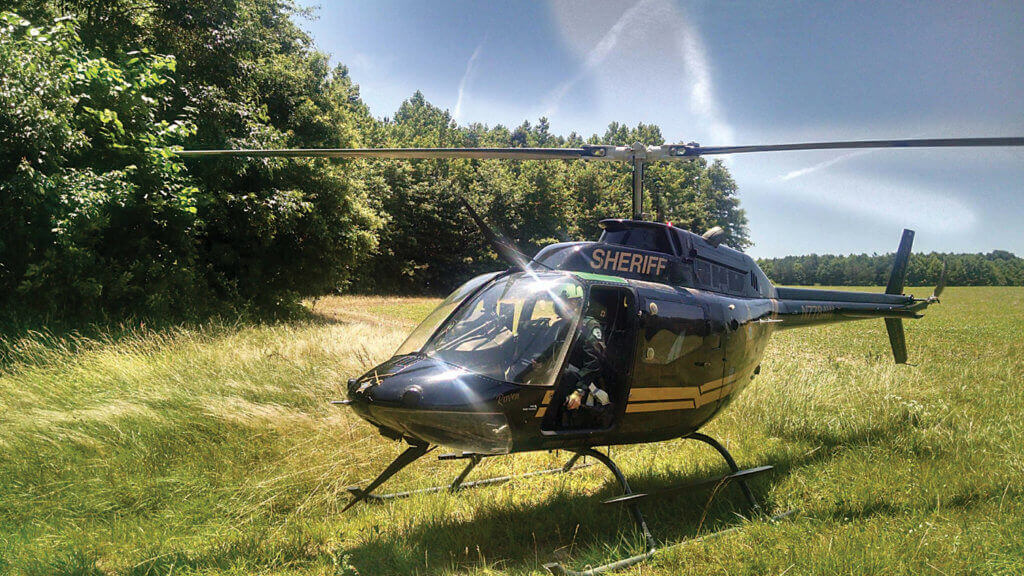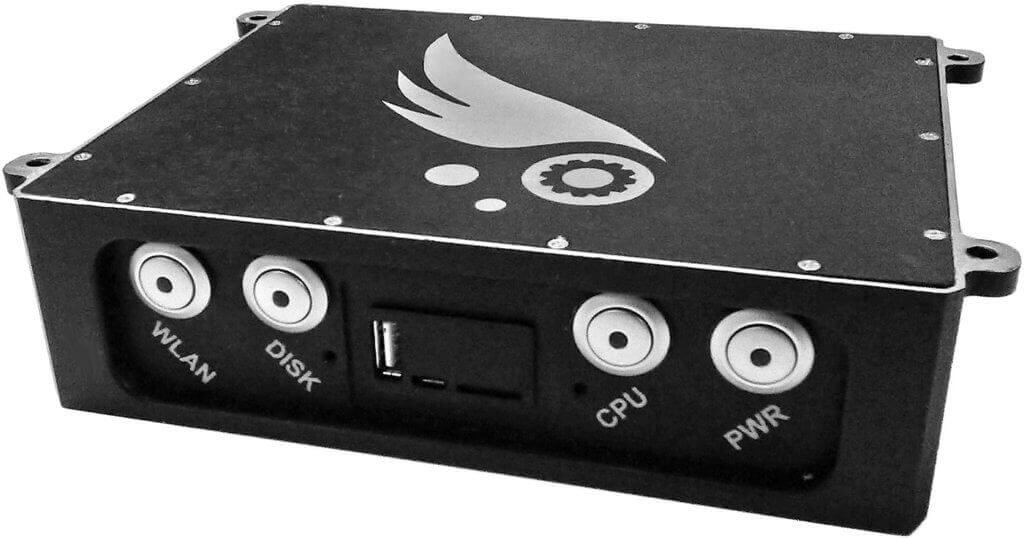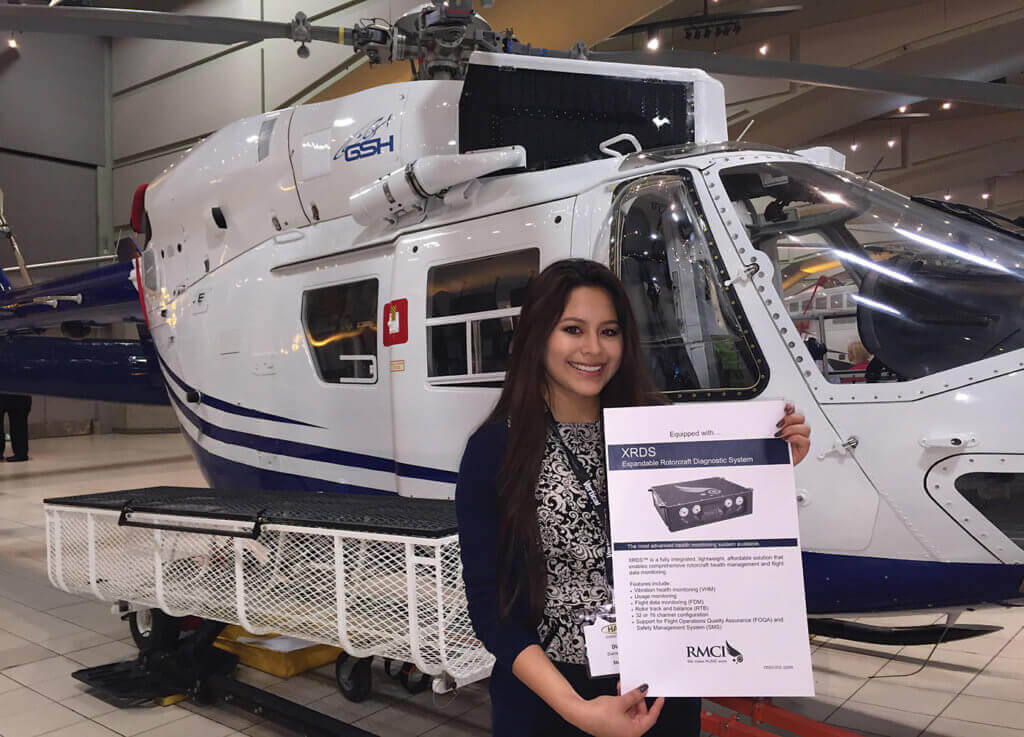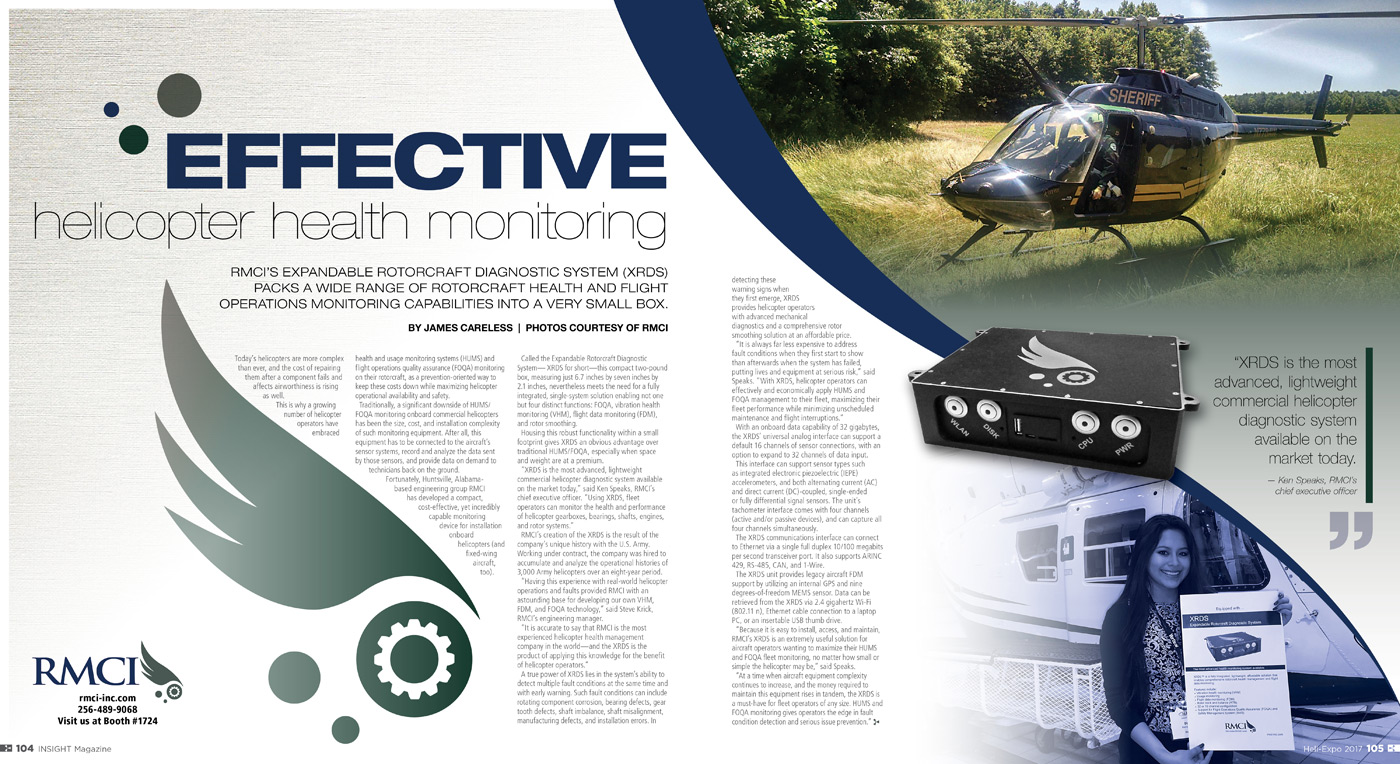Today’s helicopters are more complex than ever, and the cost of repairing them after a component fails and affects airworthiness is rising as well.

This is why a growing number of helicopter operators have embraced health and usage monitoring systems (HUMS) and flight operations quality assurance (FOQA) monitoring on their rotorcraft, as a prevention-oriented way to keep these costs down while maximizing helicopter operational availability and safety.
Traditionally, a significant downside of HUMS/FOQA monitoring onboard commercial helicopters has been the size, cost, and installation complexity of such monitoring equipment. After all, this equipment has to be connected to the aircraft’s sensor systems, record and analyze the data sent by those sensors, and provide data on demand to technicians back on the ground.
Fortunately, Huntsville, Alabama-based engineering group RMCI has developed a compact, cost-effective, yet incredibly capable monitoring device for installation onboard helicopters (and fixed-wing aircraft, too).
Called the Expandable Rotorcraft Diagnostic System — XRDS for short–this compact two-pound box, measuring just 6.7 inches by seven inches by 2.1 inches, nevertheless meets the need for a fully integrated, single-system solution enabling not one but four distinct functions: FOQA, vibration health monitoring (VHM), flight data monitoring (FDM), and rotor smoothing.
Housing this robust functionality within a small footprint gives XRDS an obvious advantage over traditional HUMS/FOQA, especially when space and weight are at a premium.

“XRDS is the most advanced, lightweight commercial helicopter diagnostic system available on the market today,” said Ken Speaks, RMCI’s chief executive officer. “Using XRDS, fleet operators can monitor the health and performance of helicopter gearboxes, bearings, shafts, engines, and rotor systems.”
RMCI’s creation of the XRDS is the result of the company’s unique history with the U.S. Army. Working under contract, the company was hired to accumulate and analyze the operational histories of 3,000 Army helicopters over an eight-year period.
“Having this experience with real-world helicopter operations and faults provided RMCI with an astounding base for developing our own VHM, FDM, and FOQA technology,” said Steve Krick, RMCI’s engineering manager.
“It is accurate to say that RMCI is the most experienced helicopter health management company in the world — and the XRDS is the product of applying this knowledge for the benefit of helicopter operators.”
A true power of XRDS lies in the system’s ability to detect multiple fault conditions at the same time and with early warning. Such fault conditions can include rotating component corrosion, bearing defects, gear tooth defects, shaft imbalance, shaft misalignment, manufacturing defects, and installation errors. In detecting these warning signs when they first emerge, XRDS provides helicopter operators with advanced mechanical diagnostics and a comprehensive rotor smoothing solution at an affordable price.

“It is always far less expensive to address fault conditions when they first start to show than afterwards when the system has failed, putting lives and equipment at serious risk,” said Speaks. “With XRDS, helicopter operators can effectively and economically apply HUMS and FOQA management to their fleet, maximizing their fleet performance while minimizing unscheduled maintenance and flight interruptions.”
With an onboard data capability of 32 gigabytes, the XRDS’ universal analog interface can support a default 16 channels of sensor connections, with an option to expand to 32 channels of data input.
This interface can support sensor types such as integrated electronic piezoelectric (IEPE) accelerometers, and both alternating current (AC) and direct current (DC)-coupled, single-ended or fully differential signal sensors. The unit’s tachometer interface comes with four channels (active and/or passive devices), and can capture all four channels simultaneously.
The XRDS communications interface can connect to Ethernet via a single full duplex 10/100 megabits per second transceiver port. It also supports ARINC 429, RS-485, CAN, and 1-Wire.
The XRDS unit provides legacy aircraft FDM support by utilizing an internal GPS and nine degrees-of-freedom MEMS sensor. Data can be retrieved from the XRDS via 2.4 gigahertz Wi-Fi (802.11 n), Ethernet cable connection to a laptop PC, or an insertable USB thumb drive.
“Because it is easy to install, access, and maintain, RMCI’s XRDS is an extremely useful solution for aircraft operators wanting to maximize their HUMS and FOQA fleet monitoring, no matter how small or simple the helicopter may be,” said Speaks.
“At a time when aircraft equipment complexity continues to increase, and the money required to maintain this equipment rises in tandem, the XRDS is a must-have for fleet operators of any size. HUMS and FOQA monitoring gives operators the edge in fault condition detection and serious issue prevention.”
If you would like to see your company featured in Insight, contact Derek Kast at derek@mhmpub.com.










It makes sense that monitoring equipment could be difficult to use if it is really expensive or bulky. Having that kind of tooling would be really beneficial, however. That way you can always know if there is a problem and respond effectively.